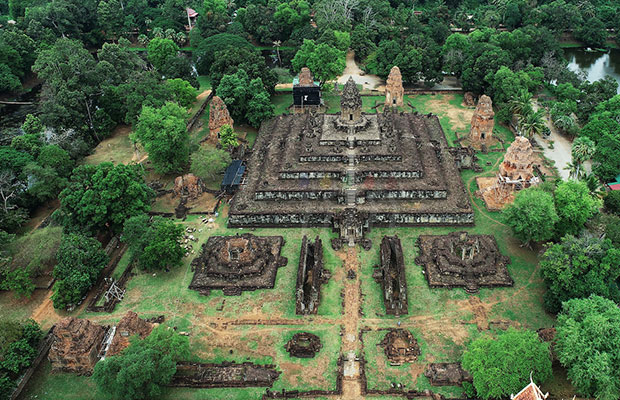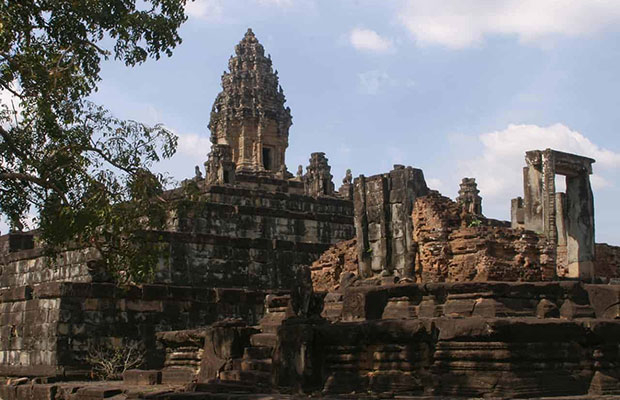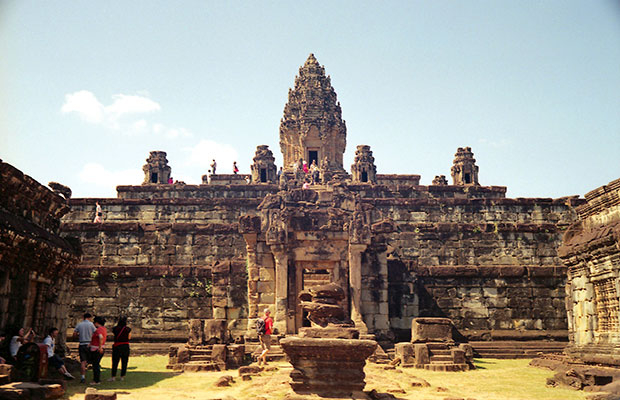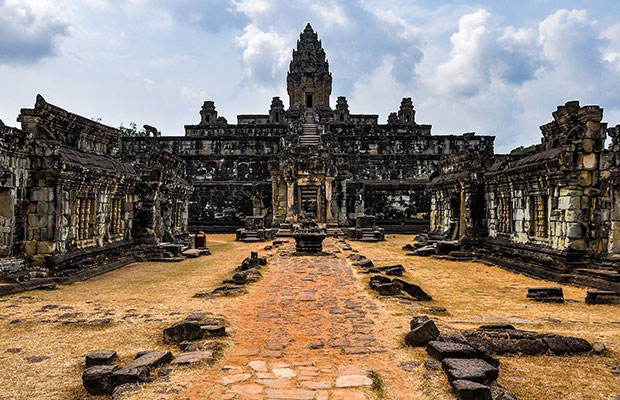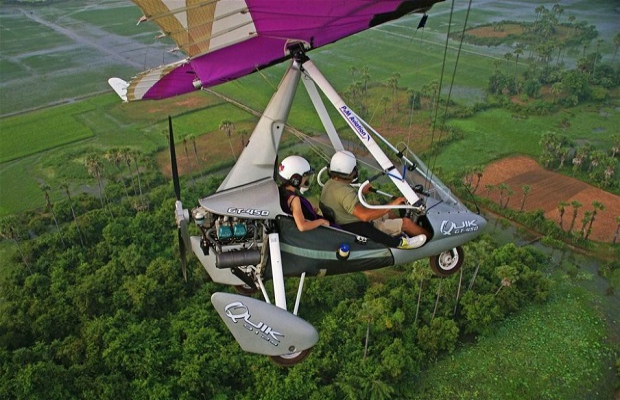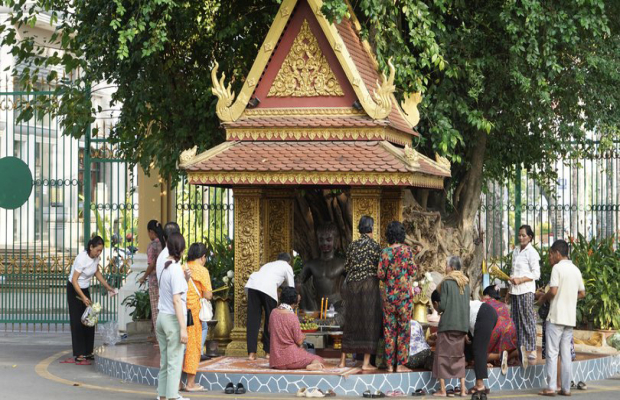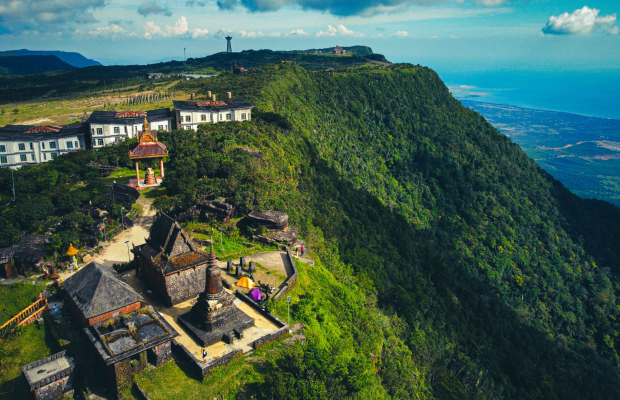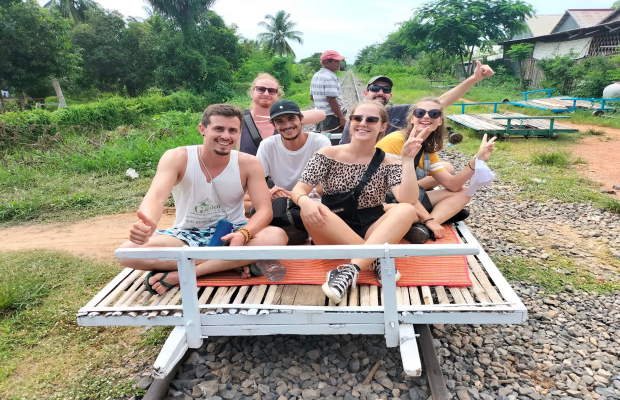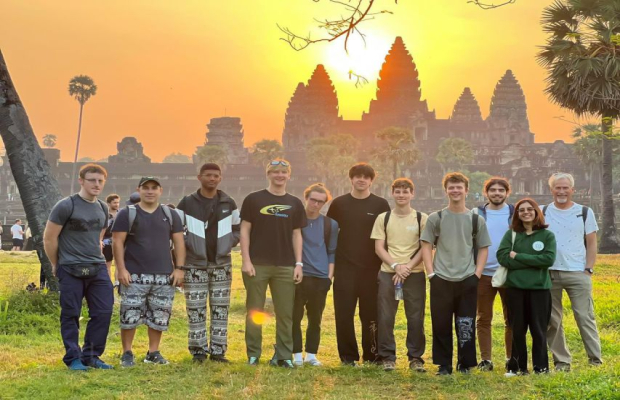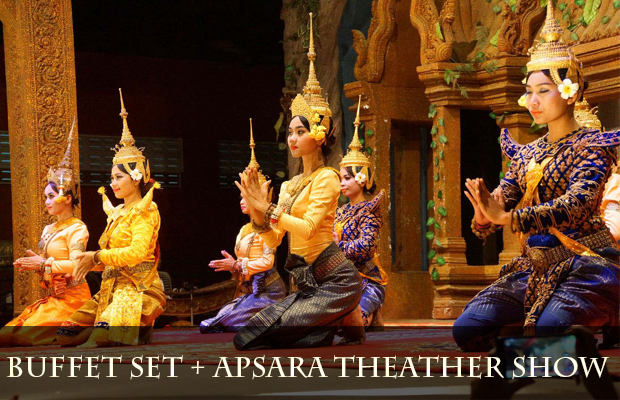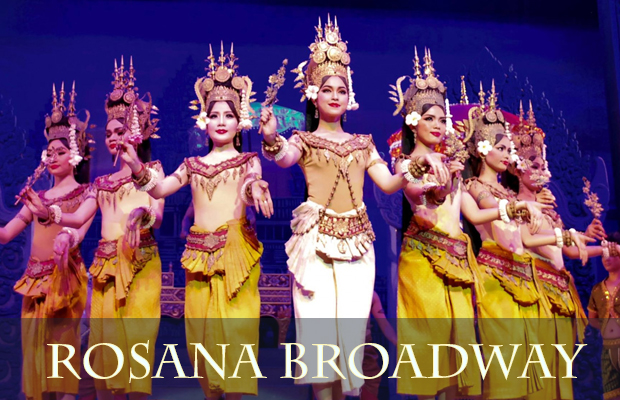Cambodia Temple Guide
Bakong Temple
Bakong is the first temple mountain of sandstone constructed by rulers of the Khmer empire at Angkor near modern Siem Reap in Cambodia. In the final decades of the 9th century AD, it served as the official state temple of King Indravarman I in the ancient city of Hariharalaya, located in an area that today is called Roluos.
History of Bakong Temple
In 802 AD, the first king of Angkor Jayavarman II declared the sovereignty of Cambodia. After ups and downs, he established his capital at Hariharalaya. Few decades later, his successors constructed Bakong in stages as the first temple mountain of sandstone at Angkor. The inscription on its stele (classified K.826) says that in 881 King Indravarman I dedicated the temple to the god Shiva and consecrated its central religious image, a lingam whose name Sri Indresvara was a combination of the king's own and the suffix "-esvara" which stood for Shiva ("I?vara").[3] According to George Coedes, the devar?ja cult consisted in the idea of divine kingship as a legitimacy of royal power, but later authors stated that it doesn't necessarily involve the cult of physical persona of the ruler himself.
Bakong enjoyed its status as the state temple of Angkor for only a few years, but later additions from the 12th or 13th centuries testify that it was not abandoned. Toward the end of the 9th century, Indravarman's son and successor Yasovarman I moved the capital from Hariharalaya to the area north of Siem Reap now known as Angkor, where he founded the new city of Yasodharapura around a new temple mountain called Bakheng.
The Site of Bakong Temple
The site of Bakong measures 900 meters by 700 meters, and consists of three concentric enclosures separated by two moats, the main axis going from east to west. The outer enclosure has neither a wall nor gopuras and its boundary is the outer moat, today only partially visibile. The current access road from NH6 leads at the edge of the second enclosure. The inner moat delimits a 400 by 300 meters area, with remains of a laterite wall and four cruciform gopuras, and it is crossed by a wide earthen causeway, flanked by seven-headed n?gas, such as a draft of n?ga bridge . Between the two moats there are the remains of 22 satellite temples of brick. The innermost enclosure, bounded by a laterite wall, measures 160 meters by 120 meters and contains the central temple pyramid and eight brick temple towers, two on each side. A number of other smaller buildings are also located within the enclosure. Just outside of the eastern gopura there is a modern buddhist temple.
The pyramid itself has five levels and its base is 65 by 67 meters. It was reconstructed by Maurice Glaize at the end of the 1930s according to methods of anastylosis. On the top there is a single tower that is much later in provenance, and the architectural style of which is not that of the 9th century foundations of Hariharalaya, but that of the 12th century temple city Angkor Wat.
Though the pyramid at one time must have been covered with bas relief carvings in stucco, today only fragments remain. A dramatic scene-fragment involving what appear to be asuras in battle gives a sense of the likely high quality of the carvings. Large stone statues of elephants are positioned as guardians at the corners of the three lower levels of the pyramid. Statues of lions guard the stairways.
Layout of Bakong Temple
The temple of Bakong is built on an artificial mountain and enclosed in a rectangular area by two walls. It has a square base with five tiers. The first, or outside, enclosure (not on the plan) (900 by 700 meters, 2,953 by 2,297 feet) surrounds a moat with an embankment and causeways on four sides, which are bordered by low Naga balustrades. The second and smaller enclosure has an entry tower of sandstone and laterite in the center of each side of the wall. There were originally 22 towers inside the first enclosures. After passing through the entry tower at the east one comes to a long causeway decorated with large seven-headed serpents across a moat. Long halls on each side lie parallel to the eastern wall. They were probably rest houses for visitors. Two square-shaped brick building at the northeast and southeast corners are identified by rows of circular holes and an opening to the west. The vents in the chimneys suggest these buildings served as crematoriums. There was originally a single building of this type at the northwest and southwest corners but today they are completely ruined. On each side of the causeway just beyond the halls there are two square structures with four doors. The inscription of the temple was found in the one on the right.
Further along the causeway, there are two long sandstone buildings on each side, which open to the causeway. These may have been storehouses or libraries. To the north and south of the storehouses receptively there is a square brick sanctuary tower. There are two more on each side of the central platform, making a total of eight. Decoration on the towers is in brick with a heavy coating of stucco. The towers, with one door opening to the east and three false doors, have a stairway on each side, which is decorated with crouching lions at the base. The two to the east of the central platform have a unique feature, a double sandstone base, The door entrance and the false doors were uniformly cut from a single block of sandstone, The decoration on the false doors is exceptionally fine, especially that on the tower on the right in the front row, the false door of which has remarkable Kala handles. The corners of the towers are decorated with female and male guardians in niches.
